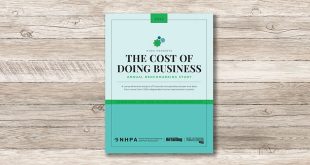Jack Kleinhenz, National Retail Federation (NRF) chief economist, says 2023 could be another record year for holiday spending.
“The last few holiday shopping seasons have been filled with unmatched peculiarities for consumers and retailers alike,” Kleinhenz says.
In 2020, sales surged 9.1% year over year despite the impacts of COVID-19. Rising demand for products overcame supply chain issues for a record growth rate of 12.7% in 2021. Holiday sales rose 5.4% in 2022, as savings built up during the pandemic provided a buffer against rising inflation and online shopping continued but more consumers returned to stores.
“This year, a whole new set of dynamics is in place,” Kleinhenz says. “The average household remains on relatively solid financial footing despite pressures from still-high inflation, stringent credit conditions and elevated interest rates. Recent revisions to government data indicate that consumers haven’t drawn down as much of their pandemic savings as believed earlier, and savings are still providing a buffer to support spending. The overall story for this holiday season is that it looks very good.”
NRF expects record spending during the holiday season—defined as November 1 through December 31—and forecasts retail sales to increase 3% to 4% over 2022 to between $957.3 billion and $966.6 billion.
The growth rate is consistent with the average annual increase of 3.6% from 2010 to 2019. The projected total sales, which exclude automobile dealers, gasoline stations and restaurants to focus on core retail, would top the record of $929.5 billion set last year.
“While there is significant uncertainty surrounding the measurement of how well the economy is performing, it continues to move forward and defy recession predictions, proving it to be more resilient than anticipated,” Kleinhenz says. “I expect the recent rhythm of spending will continue into the holiday season and that consumers will continue to spend on a range of items and experiences but at a slower pace. Households are starting the season in decent financial shape and are managing the constraints of their paychecks amid higher interest rates and higher monthly financial obligations as they seek to maintain their mode of living.”
Kleinhenz says there has been a disconnect between solid consumer spending and weak consumer confidence with shoppers spending more despite worries about inflation, high interest rates and political stress. Although spending has been uneven, Kleinhenz says the consumer sector has been “remarkably resilient,” with growth rates rising in the first quarter only to slow in the second and then bounce back in the third with another slowdown expected in the fourth.
Increased spending has been fueled by continued wage and job growth. Kleinhenz says job gains have slowed but not tumbled, with payrolls climbing by 150,000 positions in October and the three-month moving average at 204,000 despite downward revisions for August and September.
There has been a shift in spending from goods to services that could affect holiday retail sales as consumers who stayed home during the pandemic are venturing out again for travel, entertainment and restaurant dining. But Kleinhenz says consumers often prioritize holiday spending and may even reduce purchases earlier in the year to safeguard their ability to spend during November and December.
 Hardware Retailing The Industry's Source for Insights and Information
Hardware Retailing The Industry's Source for Insights and Information








